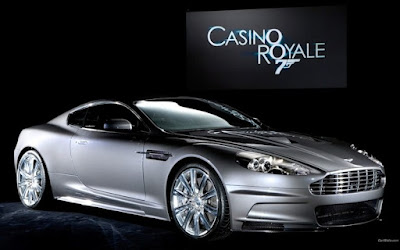
There has always been a glaringly obvious gap in Mitsubishi's current Lancer lineup. On the bottom is the... Lancer, a biggish-for-its-class economy car that no one particularly likes – at least that's what the sales charts would indicate. It's slow, filled with cheap plastics and dull. It hasn't even proven to be all that reliable by Japanese small-car standards, but at least it looks good. At the top of the heap and on a wholly different plane sits the Lancer Evolution. It's the giant-slayer, David, the little car that humbles supercars. It's also the hottest of the rally-inspired all-wheel-drive turbocharged pocket rockets. The Evo's only real competition is the Subaru WRX STI and, let's be honest, the Evo has been the better car for years now (Subaru has just updated its warrior for 2011, so a new comparison is in order). Its handling is more precise, yet at the same time more insane. The Mitsu is rawer, rougher, tougher and most importantly faster, even though it's down half a liter on the WRX STI in terms of displacement. Don't read this wrong, the STI is a fine backroad killer. But the EVO is more homicidal.
It looks like a toned down Evo, which is exactly what Mitsubishi wants you to think.
Back to that gap. In the middle of its arch rival's portfolio has long lived the WRX, Subaru's Goldie Loxian sportster, which is very fast, very nimble, but very well priced (it still starts at under $25,000). The WRX has long threaded the needle between excellent all-around performance and the customer not being able to afford a higher monthly payment. Subaru, therefore, has sold a ton of them, for not only does the WRX offer all that power and rally-bred oomph at a low price, it can be had as a wagon. Mitsubishi had nothing until this year, when the Japanese industrial powerhouse brought over two new flavors of its hopped-up Lancer, the Ralliart and the Ralliart Sportback.
Today we're taking a look at the supposedly more practical of those two additions, the five-door Sportback. When the pictures of the Lancer Sportback Ralliart started spilling onto this here internet, Yours Truly was especially excited. The main reason being that for the past eight years, I've owned a WRX wagon in one form or another. Biased? You could say that, but at that same time, I've been driving Evos against STIs and have remained aware (perhaps painfully aware) that the Evo is the sharper blade. Perhaps, then, the Sportback Ralliart could be my next fast and furious wagon, or at least go wheel-to-wheel with its competition from Fuji Heavy Industries?
The Sportback is most certainly that: Practicality has been traded away in favor of a devilishly raked rear liftgate that's almost comical. One could argue that the point of a five-door (you can argue amongst yourselves where a hatchback ends and a wagon picks up) is its versatility and cargo-swallowing capacity. Of course, we should point out that despite appearances, the Sportback Ralliart offers nearly 47 cubic feet of stowage, whereas the WRX gives you just 44. Specs not withstanding, our empirical observations suggest that it's easier to pack junk into the Subaru than it is the awkwardly proportioned Mitsubishi. That sharply sloping piece of glass will get your bigger bags almost every time.
As far as the rest of the car is concerned, it looks like a toned-down Evo, which is exactly what Mitsubishi wants you to think. Which is fine, as in many ways, the Sportback Ralliart is exactly that. Viewed from the front, you can plainly see that the tires are thinner, the intercooler is smaller and schnoz less aggressive. Viewed from the side, you can see the sills look a little tacked-on. Speaking of tacked-on, just imagine how strange the Sportback would look if you were to unbolt its rear wing – somewhere between the old Mazda 626 Touring and the Sterling 827? Of course, beauty is in the eye of the beholder.



What's not in anyone's eye is the drab interior that Mitsubishi stuffed into the Sportback Ralliart. Filled with greasy plastics and almost no design of interest whatsoever (just look at the radio), the interior is where the Sportback Ralliart's econobox roots are most painfully apparent. The bargain-basement Lancer starts at $14,790 and features the exact same dash. Don't feel too bad, however, because unless you opt for the navigation system, the $33,590 EVO also comes with that same radio. You could make the argument that cheapo interiors are endemic to go-fast economy cars stuffed to the gills with fancy performance parts – the WRX's cabin is hardly a gift, after all. But then how to explain the Volkswagen GTI? Point is, overly and overtly lousy materials are no longer defensible in a car that starts at $27,590 plus delivery.
At least Mitsubishi gets the important bits right, and we mean really right. The paddle-shifters, for instance, are excellent, being big, metallic (magnesium, actually) and column mounted. There are lots of supposed luxury sports car out there that could only wish for such fine paddles. Then there's the meaty leather steering wheel and equally stout gear shifter. These are the sorts of materials required in a proper performance car. The metal-capped pedals are also quite nice. Again, the parts that matter for driving are, in fact, excellent.
There are a few buttons we have to mention before moving on. The first is the lonely looking AWC button. AWC stands for All-Wheel Control and pushing it changes the way the active central differential routes torque to the four wheels. Your choices are Tarmac, Gravel and Snow. We tried the different AWC settings in Gravel (we tested the car in Palm Springs and Los Angeles, so, sorry, no snow) and the grip does seem better on those types of roads with the setting engaged. That said, it was worlds more fun running Tarmac on a bunch of loose rocks, as the Sportback Ralliart slid around nicely under hard acceleration.
Then there's the SST selector, which will seem quite familiar to those of you who enjoy Guitar Hero, as it's the same as the little thingy you strum. This paddle switch changes the TC-SST dual-clutch six-speed transmission from Normal to Sport. As you might imagine, Normal is a laggard mode tailored for smoothness and fuel economy, where the transmission will happily shift itself up to sixth gear by the time you crest 40 mph. Sport is a pretty good middle ground, as the engine revs higher before the transmission changes gears. Unlike big-brother Evo, Sportback Ralliarts don't feature S-Sport mode, which would provide still higher revs before shifting. However, even in Sport, the TC-SST doesn't seem to shift at high rpm. Instead, you just buzz around near redline. Our preferred choice was to select Sport, but then do all the shifting ourselves via the sweet paddles. Either way, mileage is pretty bad – despite the EPA suggesting that you'll hit 17 miles per gallon in the city and 25 out on the highway, expect high teens combined if you're having any fun at all.



Speaking of redline, this is a buzz-box of an engine. Fitted with a turbocharger, the 4B11T 2.0-liter inline four-cylinder is capable of producing 237 horsepower at 6,000 rpm and 253 pound-feet or torque at 3,000 rpm. The torque is most noticeable, as the Sportback Ralliart simply surges when you whack the go pedal. Not only does it feel like it's surging, it sounds like it, too. If shrieking four-bangers are your thing, you're going to love it. If not, you will notice that Mitsubishi sure didn't waste any money on soundproofing. Obviously, compared to the 265-hp WRX, the Ralliart is down in the horsepower department.
Worst of all, it feels it. While the initial take off is potent – brutal even – things seem to slow down a bit once you get above 45 mph. Now, while it still sounds like you're going faster as the engine keeps screaming and screaming, brazen, tire-shredding acceleration is not the Sportback Ralliart's forte. Case in point, the weirdly quick WRX can hit 60 mph in 4.7 seconds (with an outlet or two clocking it at a silly 4.5), whereas the Sportback Ralliart takes a relatively leisurely 5.5 seconds to do the deed. Quick, sure, but not crazy quick.
If speed isn't the Sportback Ralliart's biggest virtue and selling point, surely handling is. And it is, to a point. Turn the wheel, and you're instantly filled with the sense that there's a whole lot of rally-heritage packed into the chassis. And there is. The chassis and most of the suspension pieces are from an Evo, though not the current one. The all-wheel-drive system in fact comes from the last generation Evo IX. Less pricey tires, too. The result is that while the car feels like a rally monster and consequently you feel like a rally hero, the limits are in fact pretty low. We imagine the sheer volume of noise in the cabin has something to do with this seeming conundrum.
Here's an example: You're hooning along your favorite road and here comes that one decreasing radius, rising elevation turn you know like the back of your Pilotis. You downshift, you turn in, you modulate the throttle, and man, listen to them tires squeal! Thing is, if you weren't so preoccupied with the task at hand, a quick glance down at the speedometer would reveal that you're not moving nearly as quickly as you thought you were. Lack of grip and a preference for understeer are the Sportback Ralliart's biggest handling shortcomings. Put another way, if numbers matter to you (skidpad, lap times), look elsewhere. However, if you just want a little wagon that feels great when the going gets twisty, this one isn't so bad.

While certainly not a bad car, the 2010 Mitsubishi Lancer Sportback Ralliart is a compromised vehicle. In strict terms of the competition, I like it more than the twitchy MazdaSpeed3 but less than a Subaru WRX. While the Mazda has more power, the Mitsubishi's smart AWD system (last generation or not) lays the power down in a much more competent and satisfying way than the Speed3. The WRX, however, smokes the tires off of both. While the WRX is not the shockingly capable canyon carver it once was (blame the long travel suspension and re-packaged rear introduced in 2008), the Sportback Ralliart comes up short. Initial turn-in feels better, but that's about it. And the not-so-great WRX interior is actually a nicer place to sit. Then comes the real head scratcher: the price. More than $31,000 as tested for Sportback Ralliart is starting to creep dangerously close to Evo/STI territory. And the STI comes as a five-door...


































